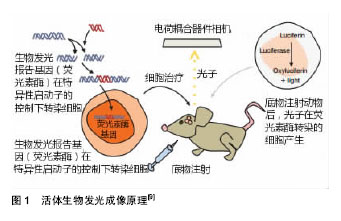| [1] Lozano R, Naghavi M, Foreman K, et al. Global and regional mortality from 235 causes of death for 20 age groups in 1990 and 2010: a systematic analysis for the Global Burden of Disease Study 2010. Lancet. 2012;380(9859):2095-2128.[2] Sullivan R, Duncan K, Dailey T, et al. A possible new focus for stroke treatment - migrating stem cells. Expert Opin Biol Ther. 2015;15(7): 949-958.[3] Liu X, Ye R, Yan T, et al. Cell based therapies for ischemic stroke: from basic science to bedside. Prog Neurobiol. 2014;115:92-115.[4] Tang YH, Ma YY, Zhang ZJ, et al. Opportunities and challenges: stem cell-based therapy for the treatment of ischemic stroke. CNS Neurosci Ther. 2015;21(4):337-347.[5] Li D, Zhang M, Zhang Q, et al. Functional recovery after acute intravenous administration of human umbilical cord mesenchymal stem cells in rats with cerebral ischemia-reperfusion injury. Intractable Rare Dis Res. 2015;4(2):98-104.[6] Kim JY, Jeon HB, Yang YS, et al. Application of human umbilical cord blood-derived mesenchymal stem cells in disease models. World J Stem Cells. 2010;2(2):34-38.[7] 朱尧, 汪青松, 黄海丽, 等. 脐带血间充质干细胞改善兔脑梗死神经生长因子和神经元凋亡的研究[J]. 中华老年心脑血管病杂志, 2013, 15(12):1316-1320. [8] Aswendt M, Adamczak J, Tennstaedt A. A review of novel optical imaging strategies of the stroke pathology and stem cell therapy in stroke. Front Cell Neurosci. 2014;8:226.[9] Gavins FN, Smith HK. Cell tracking technologies for acute ischemic brain injury. J Cereb Blood Flow Metab. 2015;35(7):1090-1099.[10] Tennstaedt A, Aswendt M, Adamczak J, et al. Noninvasive multimodal imaging of stem cell transplants in the brain using bioluminescence imaging and magnetic resonance imaging. Methods Mol Biol. 2013;1052:153-166.[11] Couillard-Despres S, Vreys R, Aigner L, et al. In vivo monitoring of adult neurogenesis in health and disease. Front Neurosci. 2011;5:67.[12] Cool SK, Breyne K, Meyer E, et al. Comparison of in vivo optical systems for bioluminescence and fluorescence imaging. J Fluoresc. 2013;23(5):909-920.[13] Bakhsheshian J, Wei BR, Chang KE, et al. Bioluminescent imaging of drug efflux at the blood-brain barrier mediated by the transporter ABCG2. Proc Natl Acad Sci U S A. 2013;110(51):20801-20806.[14] Kormann MS, Hasenpusch G, Aneja MK, et al. Expression of therapeutic proteins after delivery of chemically modified mRNA in mice. Nat Biotechnol. 2011;29(2):154-157.[15] Huang NF, Okogbaa J, Babakhanyan A, et al. Bioluminescence imaging of stem cell-based therapeutics for vascular regeneration. Theranostics. 2012;2(4):346-354.[16] Wang W, Jiang Q, Zhang H, et al. Intravenous administration of bone marrow mesenchymal stromal cells is safe for the lung in a chronic myocardial infarction model. Regen Med. 2011;6(2):179-190.[17] Pendharkar AV, Chua JY, Andres RH, et al. Biodistribution of neural stem cells after intravascular therapy for hypoxic-ischemia. Stroke. 2010;41(9):2064-2070.[18] Jiang Y, Zhu W, Zhu J, et al. Feasibility of delivering mesenchymal stem cells via catheter to the proximal end of the lesion artery in patients with stroke in the territory of the middle cerebral artery. Cell Transplant. 2013;22(12):2291-2298.[19] 魏建强. 不同途径移植骨髓间充质干细胞促进创伤性脑损伤大鼠功能恢复和神经再生的研究[D]. 石家庄:河北医科大学, 2013.[20] De Keyser J. Autologous mesenchymal stem cell transplantation in stroke patients. Ann Neurol. 2005;58(4):653-654.[21] 刘慧纯, 张培培, 王世民,等. 脐带间充质干细胞移植治疗大鼠脑缺血损伤[J]. 中国组织工程研究, 2012, 16(19):3471-3475. [22] 郭燕宁, 王雪笠. 不同干细胞移植途径治疗脑缺血的示踪及效果评定[J]. 脑与神经疾病杂志, 2013, 21(4):316-318.[23] Lim JY, Jeong CH, Jun JA, et al. Therapeutic effects of human umbilical cord blood-derived mesenchymal stem cells after intrathecal administration by lumbar puncture in a rat model of cerebral ischemia. Stem Cell Res Ther. 2011;2(5):38.[24] Cheng Q, Zhang Z, Zhang S, et al. Human umbilical cord mesenchymal stem cells protect against ischemic brain injury in mouse by regulating peripheral immunoinflammation. Brain Res. 2015;1594:293-304.[25] 张培培, 刘慧纯, 阎晓玲, 等. 脑缺血再灌注损伤大鼠尾静脉移植脐带间充质干细胞的安全性[J]. 中国组织工程研究, 2012, 16(14): 2581-2584. [26] 周晶晶, 徐芳, 俞明明, 等. 人脐带血间充质干细胞改善大鼠脑梗死免疫炎性反应的研究[J]. 中华老年心脑血管病杂志, 2016, 18(1):81-84.[27] 侯亮,徐芳,刘学春,汪青松. 人脐带血间充质干细胞移植对脑梗死大鼠外周血Foxp3表达的影响[J]. 中风与神经疾病杂志,2016,33(12): 1060-1063. [28] Guan YM, Zhu Y, Liu XC, et al. Effect of human umbilical cord blood mesenchymal stem cell transplantation on neuronal metabolites in ischemic rabbits. BMC Neurosci. 2014;15:41.[29] Zhu Y, Guan YM, Huang HL, et al. Human umbilical cord blood mesenchymal stem cell transplantation suppresses inflammatory responses and neuronal apoptosis during early stage of focal cerebral ischemia in rabbits. Acta Pharmacol Sin. 2014;35(5):585-591.[30] Karlupia N, Manley NC, Prasad K, et al. Intraarterial transplantation of human umbilical cord blood mononuclear cells is more efficacious and safer compared with umbilical cord mesenchymal stromal cells in a rodent stroke model. Stem Cell Res Ther. 2014;5(2):45.[31] Park HW, Chang JW, Yang YS, et al. The Effect of Donor-Dependent Administration of Human Umbilical Cord Blood-Derived Mesenchymal Stem Cells following Focal Cerebral Ischemia in Rats. Exp Neurobiol. 2015;24(4):358-365.[32] Lin YC, Ko TL, Shih YH, et al. Human umbilical mesenchymal stem cells promote recovery after ischemic stroke. Stroke. 2011;42(7): 2045-2053.[33] Park HW, Moon HE, Kim HS, et al. Human umbilical cord blood-derived mesenchymal stem cells improve functional recovery through thrombospondin1, pantraxin3, and vascular endothelial growth factor in the ischemic rat brain. J Neurosci Res. 2015;93(12): 1814-1825.[34] Kim ES, Ahn SY, Im GH, et al. Human umbilical cord blood-derived mesenchymal stem cell transplantation attenuates severe brain injury by permanent middle cerebral artery occlusion in newborn rats. Pediatr Res. 2012;72(3):277-284.[35] Rosenblum S, Smith TN, Wang N, et al. BDNF Pretreatment of Human Embryonic-Derived Neural Stem Cells Improves Cell Survival and Functional Recovery After Transplantation in Hypoxic-Ischemic Stroke. Cell Transplant. 2015;24(12):2449-2461.[36] Andres RH, Choi R, Pendharkar AV, et al. The CCR2/CCL2 interaction mediates the transendothelial recruitment of intravascularly delivered neural stem cells to the ischemic brain. Stroke. 2011;42(10):2923-2931.[37] Rosenblum S, Wang N, Smith TN, et al. Timing of intra-arterial neural stem cell transplantation after hypoxia-ischemia influences cell engraftment, survival, and differentiation. Stroke. 2012;43(6): 1624-1631.[38] Boehm-Sturm P, Aswendt M, Minassian A, et al. A multi-modality platform to image stem cell graft survival in the naïve and stroke-damaged mouse brain. Biomaterials. 2014;35(7):2218-2226. |
.jpg)


.jpg)